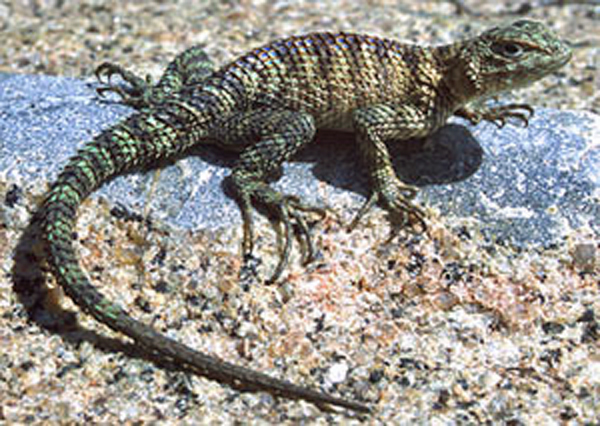The Granite spiny lizard may be causing a more potent venom in the Southern Pacific rattlesnake in California's San Jacinto Mountains.
A researcher at Loma Linda University believes that the venom of the Southern Pacific rattlesnake (Crotalus oreganus helleri) is more potent in the San Jacinto Mountains of Southern California, than those found in the San Gabriel and San Bernardino Mountains because of the abundance of the Granite spiny lizard (Sceloporus orcutti) in the San Jacinto mountains versus the other two mountain ranges.

Chris Brown/USGS
Dr William Hayes of Loma Linda University believes there is a link between the high potency of Southern Pacific rattlesnake venom and the Granite spiny lizard, its primariy diet in the San Jacinto Mountains of California.
“We’ve studied the fecal samples of the snake to identify a higher percentage of lizards than others of this species,” Dr. William Hayes told the Idyllwild Town Crier. “The San Jacinto [Mountains] are the only place we’ve seen this type of venom. . . A bigger species of lizard, the Granite spiny lizard, has a larger population distribution [here] and what might be causing that unusual venom.”
Hayes, who is a venom specialist at the university, only speculates the Southern Pacific rattlesnake’s venom is more potent because of the presence of the Granite spiny lizard.
More research would be needed to determine if there is a correlation between the large population of the lizard with that of the venom of the rattlesnake. Hayes does note that the venom from the San Jacinto population of Southern Pacific rattlesnakes is different from the venom found in the snakes of the San Gabriel and San Bernardino Mountains.


